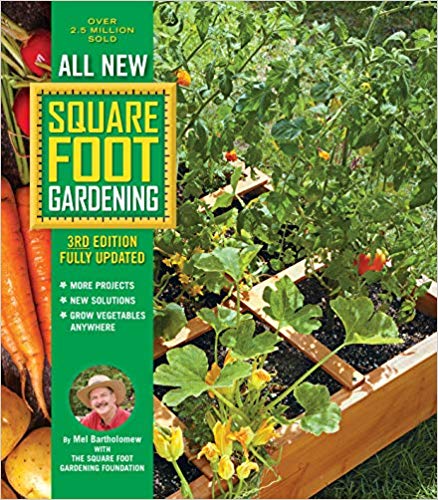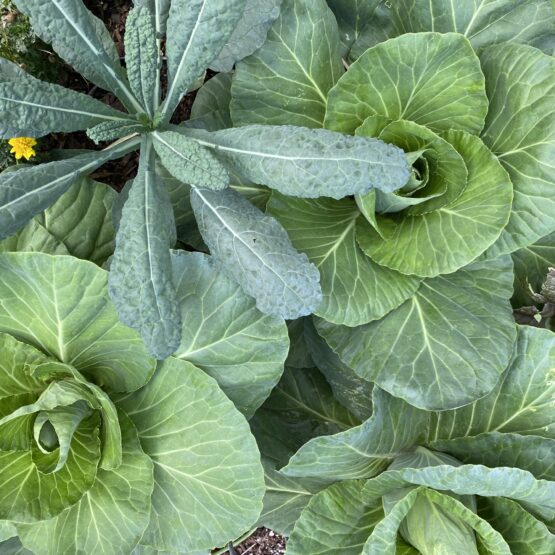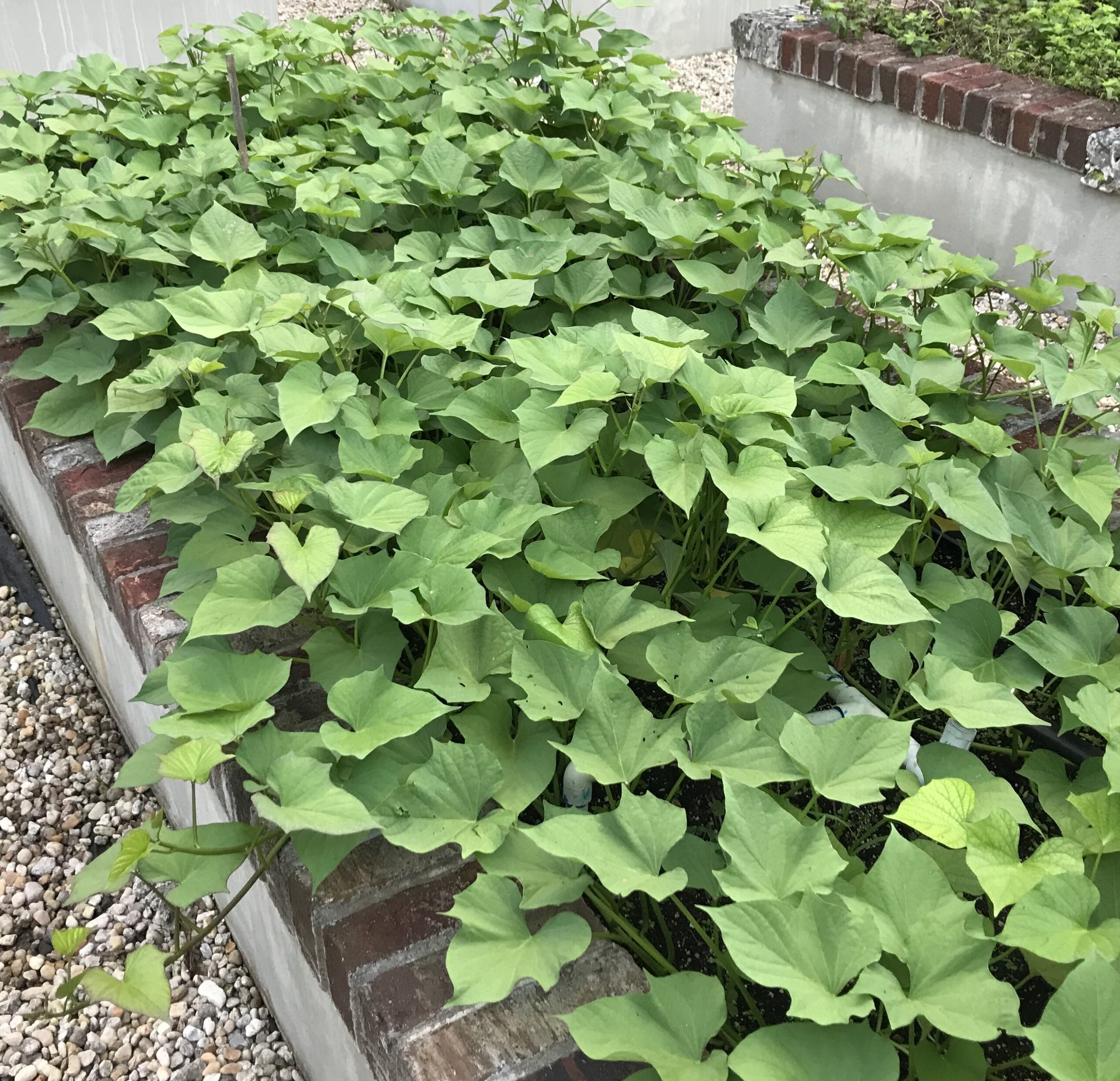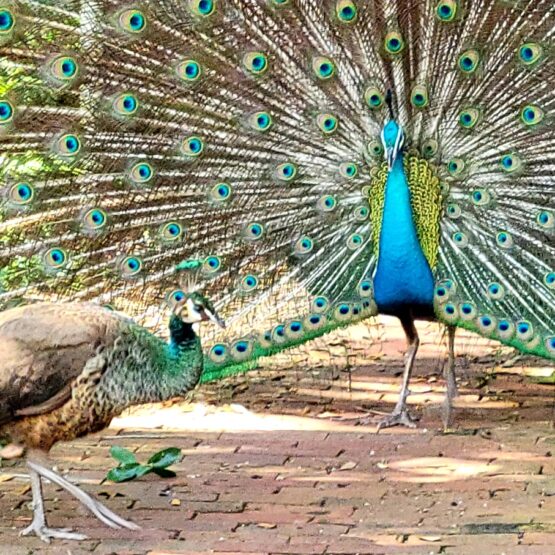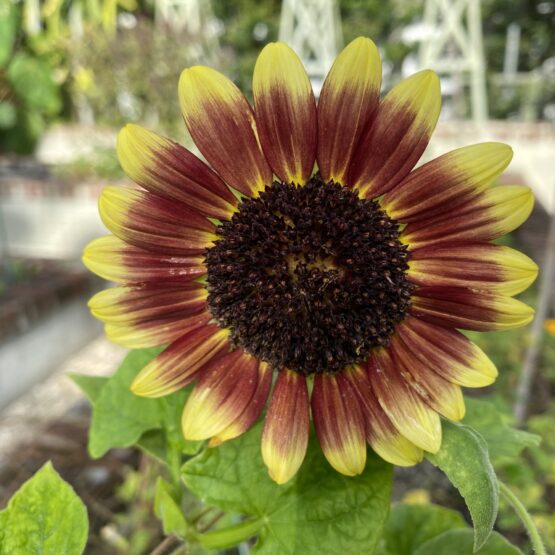Several months ago I was exposed to the technique of square foot gardening, when an older edition of this book was loaned to me. Well, this approach seemed just plain weird – why bother planting everything all packed into little squares, what’s the point? And so many different things in one bed, kinda chaotically? And to bother doing the work to divide a bed up all precisely like that? Well, as they say, “Don’t knock it ’til you try it!” Now that we’ve tried it, we’ve fallen in love with it. No, not just a fly-by-night infatuation, this is true love!
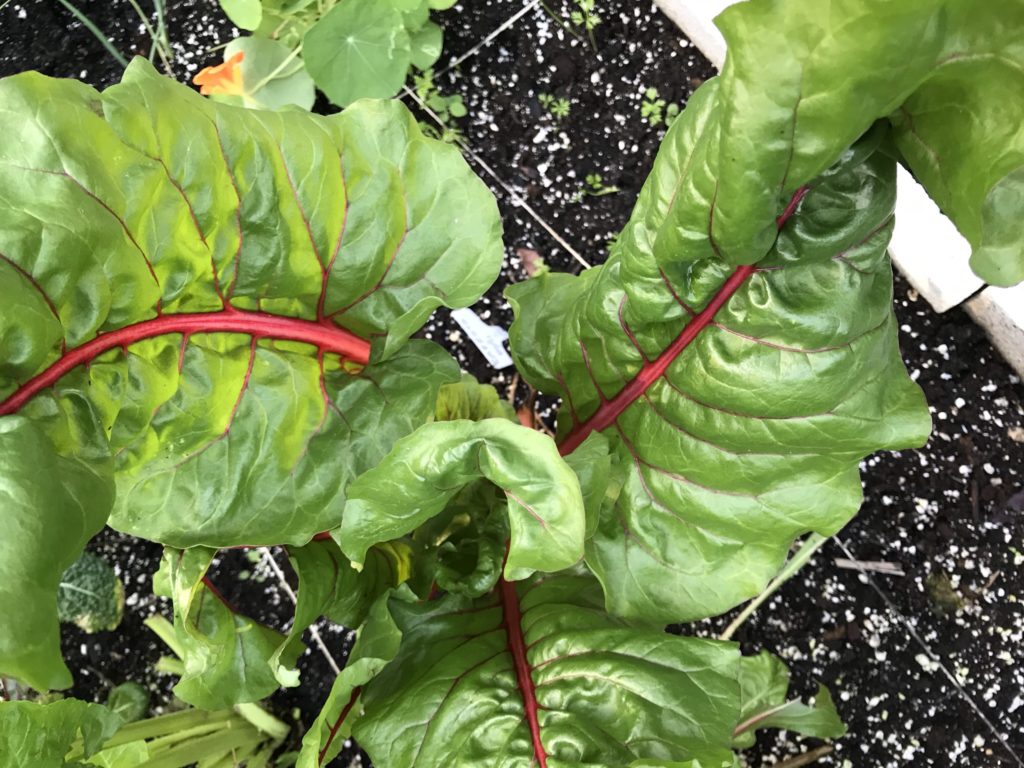
Swiss chard thriving with this method
WHY SQUARE FOOT GARDENING?
- First and foremost, the amount of food you can grow in a bed is far greater when you use this method. Row planting proves to be quite inefficient when compared to square foot gardening; for example, the number of bush green bean plants in a set amount of space is incredible! Now, the charts recommend 9 bean plants per square; I couldn’t do that, knowing how much space our beans typically take up.

Bush beans a’plenty!
- So we put 4 plants per square, and even that yielded so many beans we actually felt overwhelmed at harvest time (such a problem, right?!) We had approximately 160 bean plants in the same amount of space we would have had about 30, maybe 40 plants before with row planting (and so much wasted space). Quite a difference! And were they healthy, so many in such a small space? Next point:

Tatsoi – 9 plants per square foot
- The plants thrive with this kind of planting. One of the tricks is to spread out each specific crop across the bed (with different types of plants in between) them, e.g. plant your beans 4 per square in various non-adjacent squares across the whole bed. That way they will not attract pests as readily as when they are planted closely together. Because… pests are attracted to the scent of plants; the more planted in an area, the easier it is to find their prey. Intermittent planting of different types of crops therefore “confuses’ the pests. This worked especially well with our brassica crops as they tend to draw aphids very easily – not so with this “mixing it up” method.
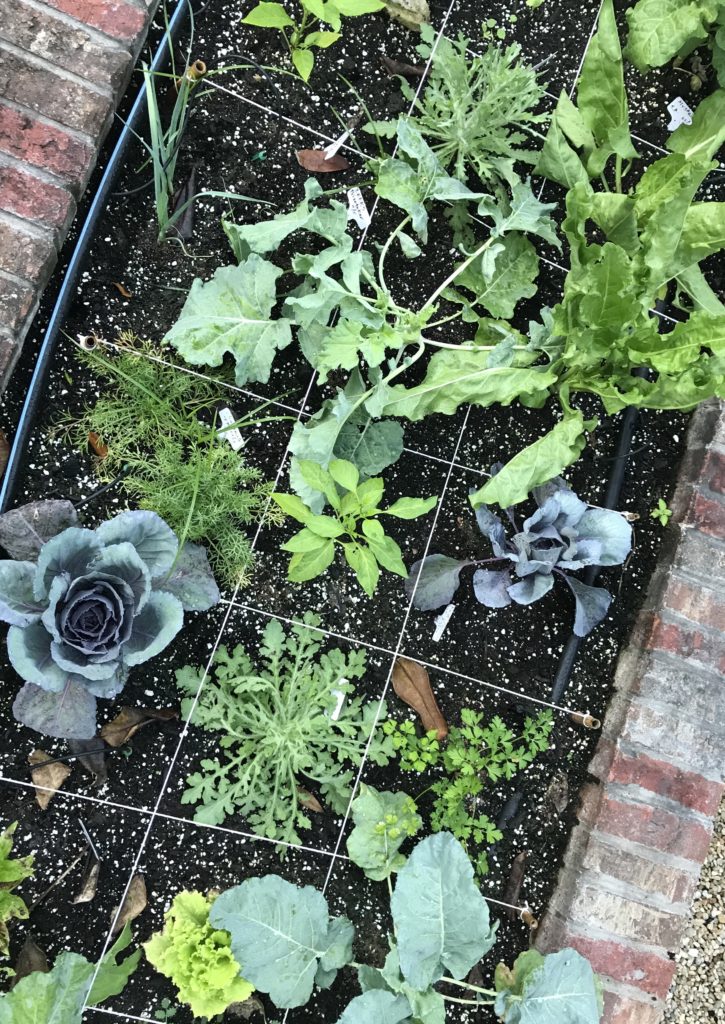
Maintenance is easy
- Maintenance with square foot gardening is so much easier – because your plants are taking up most of the space, there’s less room for weeds. Also, we can tend to individual watering needs easily square by square, which is much better for the plants. We often found there was little to do when checking on our planted beds, maybe pull a weed or two, water a few things. Incredible, right?
- It is so easy to replant once a particular crop is harvested – just add a little compost to the square(s) that open up and plant away. You don’t have to wait for a whole large crop of one vegetable to be done at once.
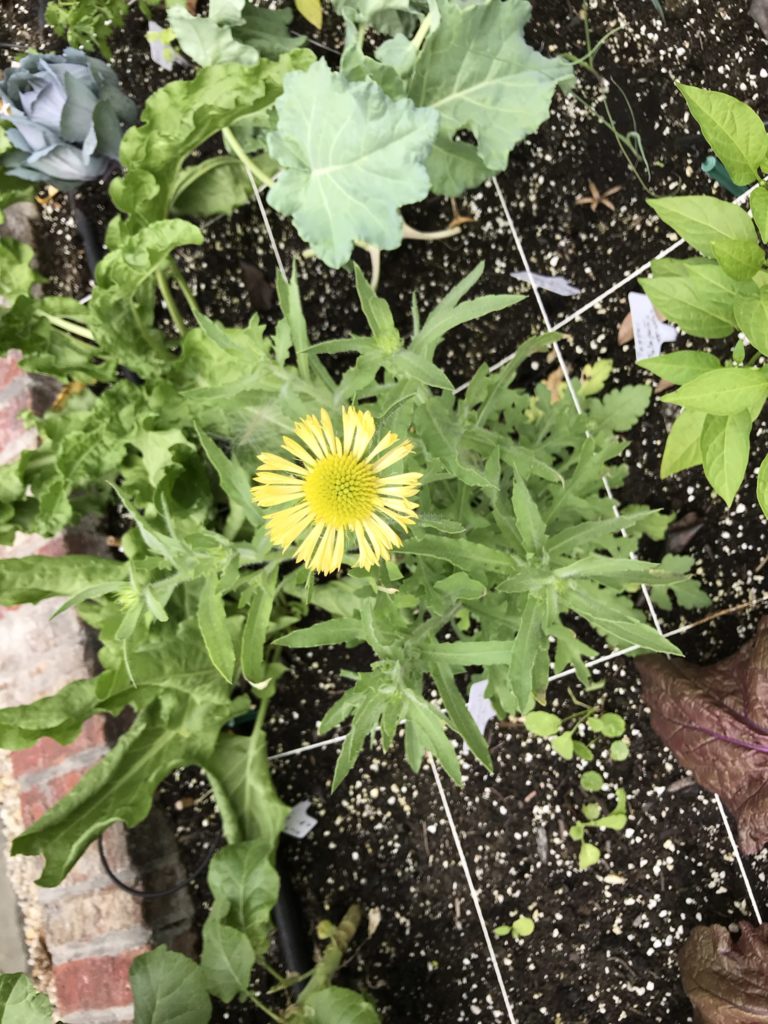
Flowers attract beneficial insects
- This is a really fun way to plant, to choose a variety of plantings for the bed and fill it in over time. We were excited to put some new types of flowers in this year spread throughout the bed; not only did this add color and beauty, more importantly, it attracted beneficial insects to the garden bed. It’s so lovely to watch everything grow to maturity in a kind of unstructured harmony – as you can see from the pictures.
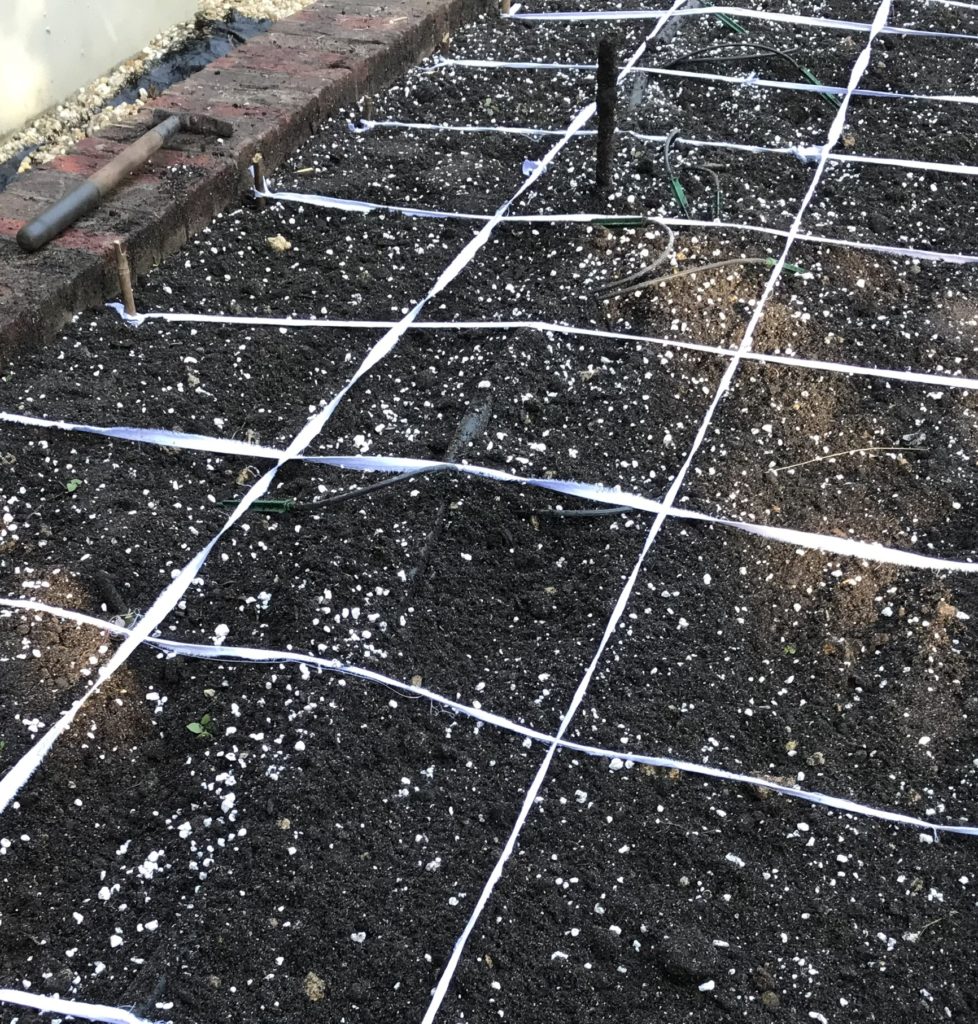
Squaring off the bed
- Basically what you do is to divide the bed up into 12″ by 12″ squares and then there are specifics to follow when planting them. The bed above is done with cloth strips; the one below is done with kitchen twine, which we prefer. After trying different scrappy ways to hold the string, we settled upon buying narrow bamboo poles and cutting them neatly into 8″ pieces. We measured the bed and placed the bamboo stakes across from each other at each square foot mark, and then tied the string between them. If the string loosens up, we can just turn the bamboo stake to take up the slack. (You can also just lay sticks on the ground to mark your squares; we tried this and they got moved around some, and being right on the dirt it is sometimes hard to tell where they are under the plants.) There are some cool wooden structures outlined in Bartholomew’s book, which take some time and effort. We will probably stick with the bamboo and string, as it has worked well.
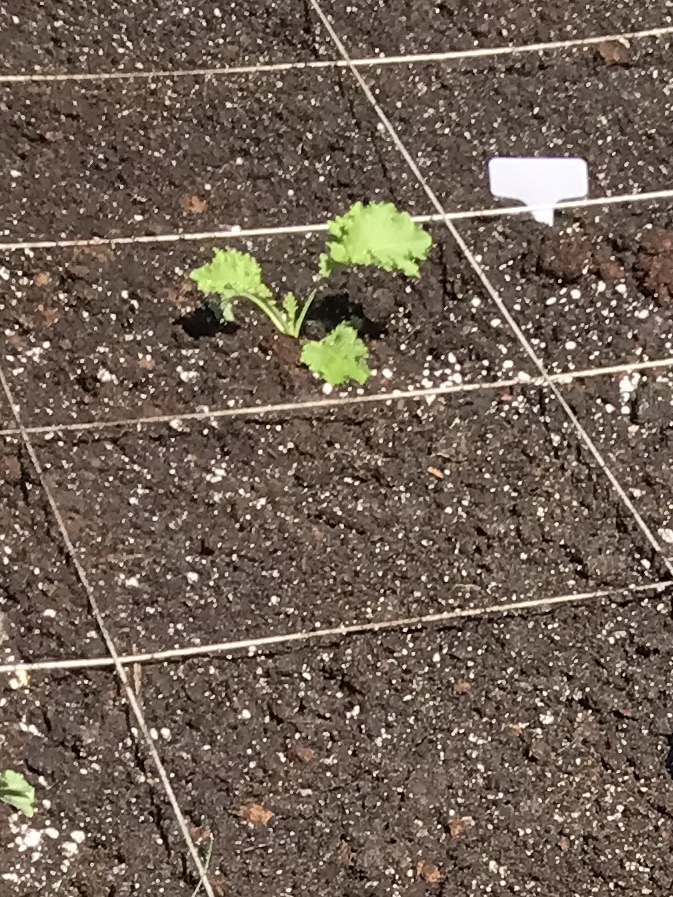
Square foot sections with string
- At first I tried to do the square foot gardening without using a grid – and have to admit to the people who advised me not to do that were right! First of all, you will not typically plant an entire bed in one shot, as many different crops should go in there, so it’s nice to have your grid all set up in the beginning and then you just plop any new plantings in when you’re ready to. It’s also better to have the squares delineated so that all your subsequent planting is easily done – not many squares are freed up at the same time. It’s so simple and orderly when it’s all marked off. you can then track what went well in terms of the “plants per square” advice you’ve followed for each individual crop, and what might need to be adjusted for future plantings. We definitely found the little bit of time it takes to set up the grid is well worth it, and after the first bed or two we got a good system down!

Starting with transplants
- Each square is meant to hold a certain number of one type of plant. Now this is the most amazing part – 16 radishes in a square foot? Same with scallions, and carrots? You can easily find this information online, charts have been posted as to how many of each type of plant should be put in a square foot. It will amaze you – because most people are “row planters” – we’re used to the practice of spacing plants in long rows a uniform distance from each other according to seed packet directions or conventional wisdom. You will grow a lot more food in the space you have! There is a good chart example on this site: gardeninminutes.com. And here is an adapted version based on our experiences with the square foot method and what we typically grow here in South Florida (downloadable/printable in a Word file). We keep this is a plastic sleeve in the garden for reference when planting; it’s very useful! Sq ft Gdn’g – Plant Spacing Chart So Fla 10-21
- It was a learning curve to figure out that the taller plants need to go in the north end, so they don’t overshadow the smaller plants. I had seen this information in print, but didn’t really understand its importance until I didn’t follow the advice!

- We have this handy tool to help us with the spacing of the seeds and transplants. Now you don’t have to buy this – you can just visualize where the holes go (based on how many plants are recommended per square) and poke your finger in the soil – but it is a great invention! We use it to determine our spacing for both transplanting seedlings and starting plants from seeds. Made of very hard plastic, it easily washes off and stores away between garden sessions. We had one donated to us in our community garden, and since then have purchased another one so we have two on heavy planting days. Everyone loves it! Square foot gardening template.

Fennel likes its own bed!
Just a bit of gardening trivia for you – fennel likes to grow by itself. We learned this from the experience of fennel not doing well when planted alongside other plants, and then researching it. Ever since we’ve given the fennel plants their very own bed, with no other plants in it, they have thrived. Go figure! We put 4 per square which worked out to be a lot more fennel than we’ve ever produced in one bed before.
Square foot gardening definitely shook us out of our typical assumptions on the logistics of growing veggies. It’s definitely worth the work of setting up the square foot grid, and such a pleasure to fill it in with seeds and seedlings and then watch it grow!
You Might Also Like...
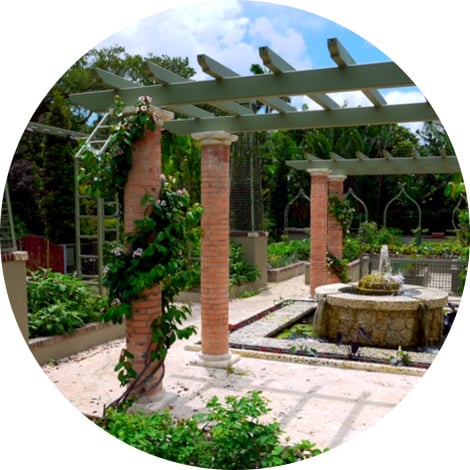
We are a small group of South Floridians who share a love of organic gardening, cooking and leading a healthy lifestyle. We garden together in Miami on a weekly basis year round, and enjoy the labor, harvest and feeling of community that this provides us. We are learning together what it means to grow food in South Florida, with our unique climate and seasons, which are so different than the rest of the country. This website is a venture in sharing information and resources relevant to gardening (and enjoying the harvest) in our South Florida environment. We hope you will find it useful!
